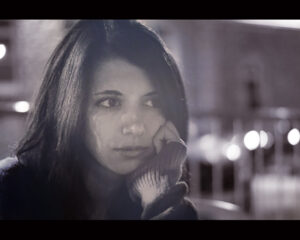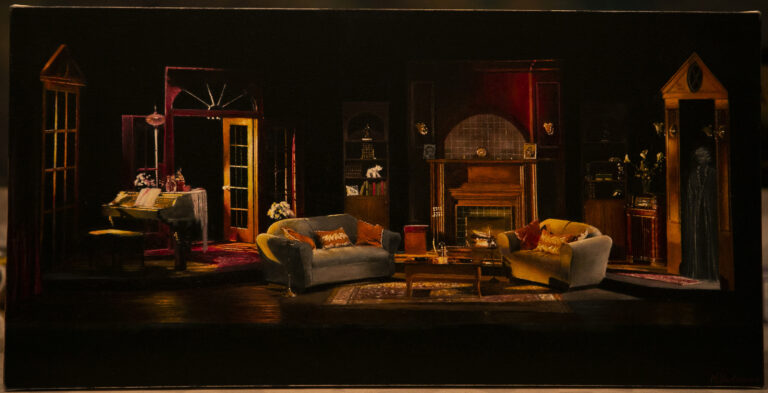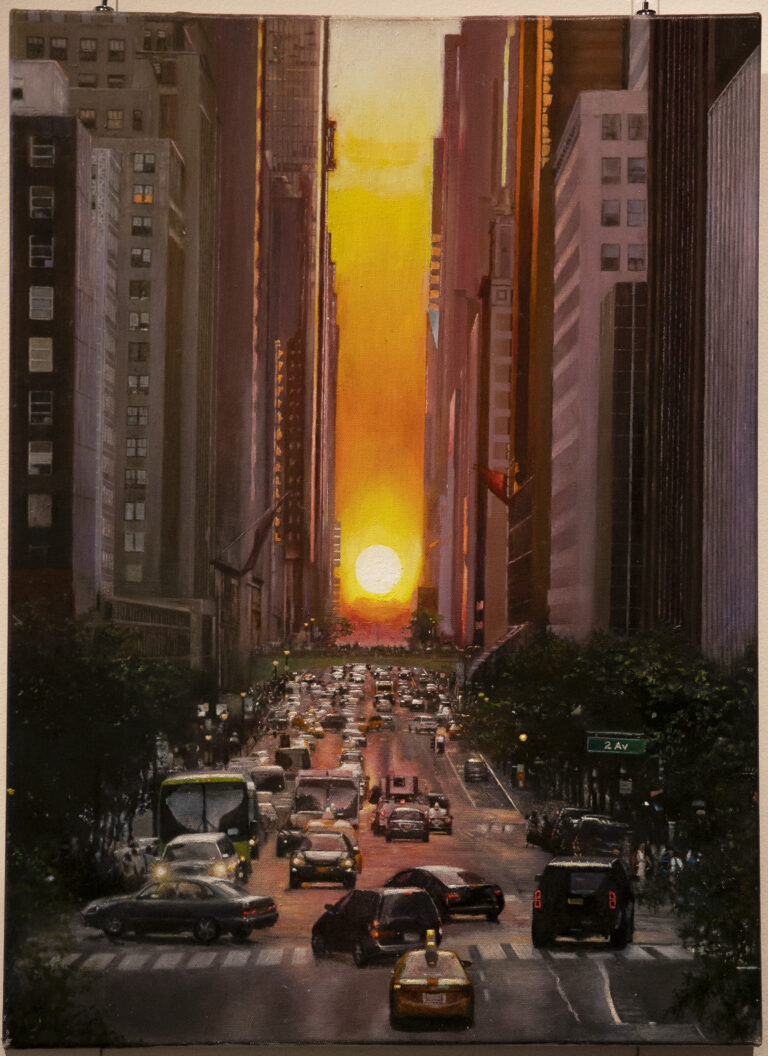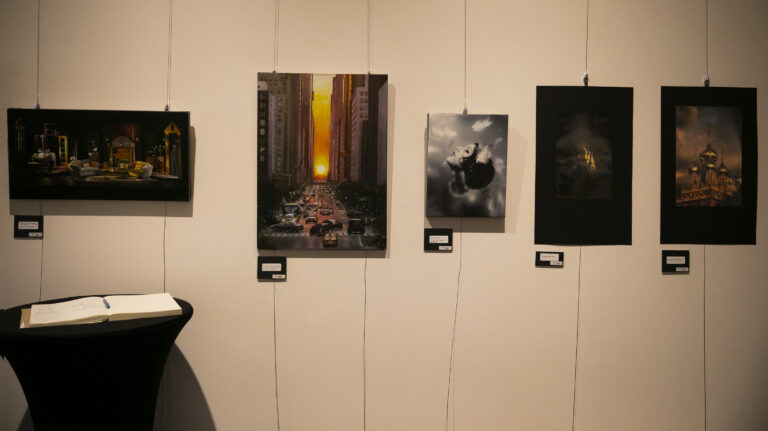
By Maria Vartanova and Albert Lightstone
If you have worked on any play as cast or crew within the last several years at the OLT you have probably had your photo taken by this artist. In fact, with all her high-speed shots, she probably took more photos of you than your parents ever did when you were a toddler. Maria is currently displaying some of her lovely eye-popping images as part of the Spotlight Gallery in The Janigan Studio. I sat down with her to try to find out all the secrets of looking good during a Kodachrome moment.
Let’s start with the most important question. How do you make me look younger and slimmer?
Same as with everyone – lighting and angles. If that doesn’t work, a smidge of Photoshop and fairy dust. Or maybe… you were just born with it!
Enough about me. Tell me about yourself. Where were you born and how did you come to Ottawa?
I am from Moscow, Russia. I ended up in Ottawa because my mom was invited to paint frescos and icons here, as they could not find many artists with her particular skillset locally.
What is your educational background?
I have a B.A. in English Literature. Very different from what I do, but it left me with a lifelong habit of romanticizing everything.
How and when did you get involved with the OLT?
I was looking for a side-gig in 2005 and my friend told me of an opening for a bartending position at OLT. A handful of years after that I ceased to work for the government, while still working part-time at OLT, and started my own photography business, which I do full-time now. I became OLT’s official photographer in 2012, and in March of 2020 my theatre bartending journey came to an end.
Tell me about your company. What type of photographic work do you do?
I don’t tend to think of myself as being a this or that type-of-photographer. I’ve shot all kinds of different things. I say I’m the kind of photographer who takes photos. It’s fair to say though that a lot of my work entails portrait photography and capturing productions for various theatres. I have also shot a lot of life moments for individuals and families.
How has the equipment and industry changed over the years?
Photography has become a lot more accessible in recent years with all the tools available – presets, tutorials, not to mention the constantly advancing camera technology of even smartphones. You see legends like Annie Leibovitz shooting a whole series of covers for Time magazine using an iPhone.
What type of equipment & software do you use?
I work primarily with Canon 5D Mark IV and I pretty much live in Photoshop, so much so that when I see problems in the real world – say, some graffiti on a beautiful building – my mind thinks, “I can fix that!”, and then I remember it’s real life. I edit using a Wacom tablet that ‘talks’ to my computer, so it looks like I’m drawing with an electronic pen when I work. If I ever tried editing with a mouse, I’d feel like my hands were tied.
You do the head shots and production shots. Let’s start with the head shots. Seriously, how do you make everyone look so good? Is it editing, photoshop?
Thank you for the kind words. Sometimes you do better than other times, and that’s inevitable. I feel a very real sense of responsibility to each person, to try to find them. One’s image in an age-old theatre is so important, and so personal.
For the production shots, especially the group cast and crew shot, it must be like herding cats. How do you do it? What do you look for? How do you remember everyone’s names?
I’m generally good with names and faces, but I’ve been involved with the Ottawa theatre scene for a while, so that helps. Group shots always make me a bit nervous because it is like herding cats, and I’m not great at projecting my voice. On top of that you have all these faces staring back at you, and you’re acutely aware of time constraints, the need for good composition, etc. However, I fall back on humour as a coping mechanism and that makes things easier. Bonus, if I can make everyone laugh. My advice to anyone taking group photos is always take a few shots. Someone always inevitably blinks – or worse!

When you take the production and group shots, we always hear click, click, click, click dozens of times per shot. How many shots do you actually take of each image ? How do you choose the best one?
I shoot a show from start to finish. Usually, if I anticipate some kind of action, more animated movement, I do rapid-fire shooting so as to freeze the figures, which helps minimize/avoid motion blur in the limited-lighting environment you’re working with. When a scene is more static, just people talking, the clicking becomes more sparse. I should add, there are moments in photography when motion blur is pretty cool.
On “Bob’s boards” which show the cast and crew as well as the production shots, you only have a limited number of available slots. Who chooses which image to post? If it is you, what are you looking for?
Bob would be honoured that you call a board after him.
I choose the shots. I tend to gravitate towards more dynamic shots, things that visually pop and engage you. I love when there’s movement in photos, papers flying, something being thrown, spinning skirts, people dancing, leaping. I also love when you see the big emotions – pain, anger, excitement, fear. With bigger casts, things can be more tricky. Can I fit everyone on the board? Should I just do the principals? But what if the new volunteers feel sad when they go to that board and don’t see themselves in the production shots? I’ve been known to draw diagrams with actors’ names to see how I can fit the pieces in the puzzle. There are only five slots. It is much easier with the material that goes online.
What’s the funniest story that you can share with us about the whole group photo/head shot process?
I’m not sure that a specific story comes to mind but it’s always funny if I tell people to order themselves in such a way that the most beautiful people are in the front. Some people volunteer themselves and that makes everyone laugh. I also love it when someone is obviously trying to hide behind others and I call on them to come out and they go, “Damn…”. Looking at you, certain props designer!
Tell us about your display. How did you pick the images?
My exhibit is a combination of my oil paintings, concept photography, and some travel photos. I’m a big fan of rich colours and dynamic lighting, and I picked the images I put up in the Janigan studio based on that. I love sunsets and I love when the skies are stormy but a crack of sunlight breaks through and lights up something on earth, just like in Fyodor Vasilyev’s paintings. I wish that kind of lighting wasn’t so fleeting.

What is your most special ? Is there a back story to it?
They’re all equally special to me, but my mind takes note of my paintings (featured here in the two photos of individual pieces) because of the sheer amount of work that went into them, and the level of challenge involved with attempting hyper-realism.
What was your most prestigious/special event that you worked on?
The answer will probably be surprising, but, in addition to photography, I have worked on digital matte paintings through the years, and have worked on a few TV shows that one might catch on HBO, CBC, etc. Matte paintings are environments you see behind/around the actors, often created in Photoshop, or other software. It was always pretty cool for me to see the final product in a shot on a screen.
Any advice for anyone wanting to get into the business?
Don’t overthink the equipment you use, the most important tool you have is your eye.
Anything else you want to add to close off the interview?
Thank you to the OLT for the chance to show a bit of what I do and thanks to those who might read this. If you would like to see more of my work please visit mariavartanova.com.

